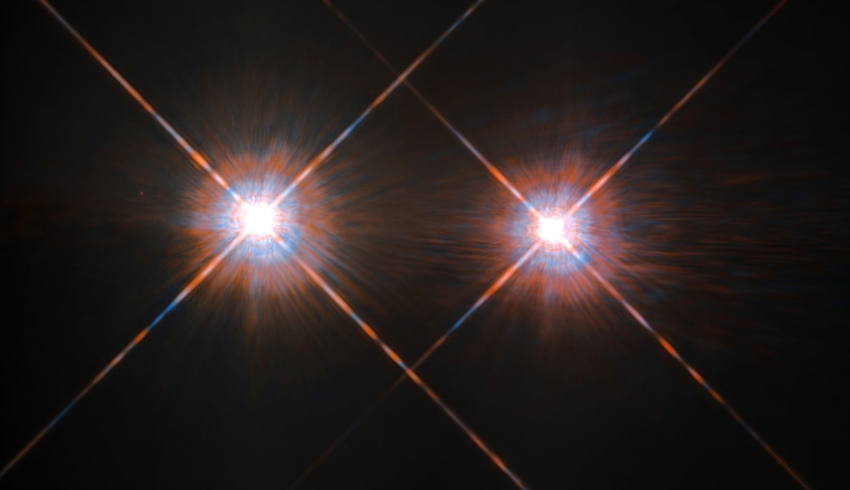The two missions will look at Alpha Centauri A and B – two sun-like stars near our own – in extreme- and far-ultraviolet light. Ultraviolet light, which has wavelengths shorter than the light that is visible to the human eye, is a critical factor in the search for life. A little bit of ultraviolet light can help form the molecules necessary for life, but too much can erode an atmosphere, leaving behind an inhospitable planet.
“Ultraviolet radiation from the sun played a role in how Mars lost its atmosphere and how Venus turned into a dry, barren landscape,” said Brian Fleming, astronomer at the University of Colorado, Boulder, and principal investigator for one of the missions, the Dual-channel Extreme Ultraviolet Continuum Experiment, or DEUCE. “Understanding ultraviolet radiation is extremely important to understanding what makes a planet habitable.”
Of the over 5,000 exoplanets known throughout across the galaxy, only Earth is known to host life. In the search for other exoplanets that could host life as we know it, astronomers have focused on planets that orbit in the habitable zone – defined as the distances from a star where a planet’s surface temperature could support water.
“But that’s a rudimentary way of characterising habitability,” Fleming said.
While water is one part of making a planet hospitable, for a planet to support an Earth-like biosphere, it also needs an atmosphere. If the habitable zone is bathed in too much ultraviolet radiation, any water vapor in the upper atmosphere could escape, quickly drying out the planet. Atmospheres can also be eroded by radiation and extreme flares from a planet’s host star, exposing the surface to harsh ultraviolet radiation, which can break apart molecules like DNA.
But just how much ultraviolet radiation is emitted by different types of stars is poorly known. Without accurate knowledge, astronomers can’t accurately predict which planets might host life.
“We need to understand the stars so that we can understand any planets we find there,” said Kevin France, astronomer at the University of Colorado, Boulder, and principal investigator for the Suborbital Imaging Spectrograph for Transition region Irradiance from Nearby Exoplanet host stars, or the SISTINE mission.
DEUCE and SISTINE will take these important measurements of ultraviolet light to help narrow the search for habitable planets. Launching only a week apart, the two missions will work together to get a full picture of the ultraviolet light coming from Alpha Centauri A and B.
The researchers selected Alpha Centauri A and B because they can serve as useful references against which to calibrate observations from the sun – the only other star for which we have complete ultraviolet measurements. Ultraviolet light is absorbed by dust and gas in space. This makes it nearly impossible to measure ultraviolet light from more distant stars at the level needed for these types of analyses. The Alpha Centauri system, however, is just 4.3 light-years away, close enough that much of its ultraviolet light reaches us before being absorbed.
Ultraviolet light is also mostly blocked by Earth’s atmosphere, so researchers have to send instruments into space to measure it. Since the full range of ultraviolet light can’t be measured with a single instrument, DEUCE will measure the shorter, extreme-ultraviolet wavelengths and SISTINE will measure the longer, far-ultraviolet wavelengths. The wavelength coverages will slightly overlap so that the collected data can be calibrated and used as one dataset. This information will then be used to create models that can help astronomers assess which other star systems could support habitable environments.
“Looking at Alpha Centauri will help us check if other stars like the sun have the same radiation environment or if there are a range of environments,” France said. “We have to go to Australia to study it because we can’t easily see these stars from the northern hemisphere to measure them.”
SISTINE is scheduled for launch 5 July and DEUCE on 12 July.
The two missions, aboard NASA two-stage Black Brant IX sounding rockets, will launch from the Arnhem Space Centre in East Arnhem Land in Australia’s Northern Territory. The Arnhem Space Centre is owned and operated by Equatorial Launch Australia, or ELA, on the land of the Yolngu, the Traditional Custodians and Landowners.
Along with a third mission, the X-ray Quantum Calorimeter, or XQC, which flew 26 June, these scientific studies can only be conducted from the Southern Hemisphere.

Adam Thorn
Adam is a journalist who has worked for more than 40 prestigious media brands in the UK and Australia. Since 2005, his varied career has included stints as a reporter, copy editor, feature writer and editor for publications as diverse as Fleet Street newspaper The Sunday Times, fashion bible Jones, media and marketing website Mumbrella as well as lifestyle magazines such as GQ, Woman’s Weekly, Men’s Health and Loaded. He joined Momentum Media in early 2020 and currently writes for Australian Aviation and World of Aviation.

